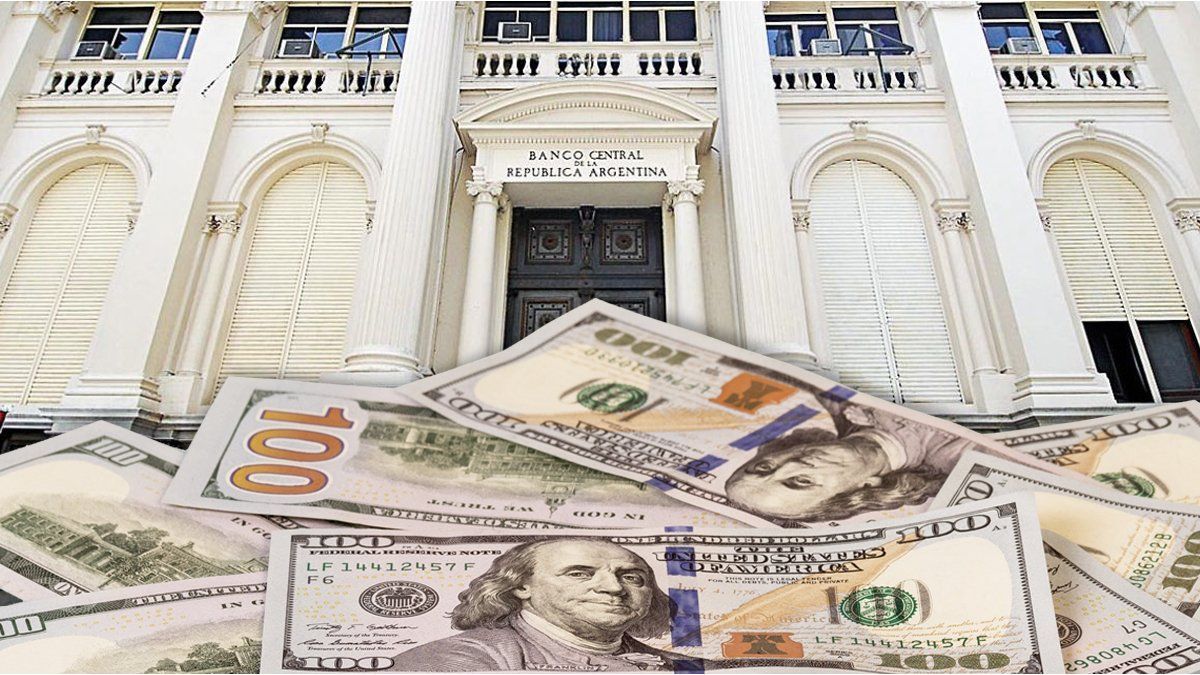While the blender continues to work non-stop, almost emulating the actions of the “little machine” from years ago, the economic team led by Luis Caputo The task continues, collecting all possible foreign currency with a view to the next maturities of external debt.
Thus, between Monday and Tuesday of last week, the Treasury went shopping at the Central Bank (BCRA) and took almost US$2,238 million. In exchange, he gave him $1,944 billion with which, to have a broader vision, the monetary entity activated the vacuum cleaner contracting with these operations the same amount of money that it injected last month. In other words, as the saying goes, they killed two birds with one stone, they made reserves and absorbed pesos from the market.
It was $230,000 million on Monday the 15th and another $1,714 billion the next day. So with the pesos that the Treasury received in the last debt tender, it quickly went to the BCRA to obtain part of the foreign currency necessary to face the next maturities. It is worth remembering that the Treasury Palace itself had anticipated that the objective of foreign currency purchases was to ensure maturities in foreign currency.
In this regard, it should be noted that in July the Libertarian Government has to pay some US$2.5 billion in interest and amortization of the Globales and Bonares bonds. Of course, in the coming days you will also have to face important payments to the International Monetary Fund (IMF) of around US$2.8 billion.
In this way, the market clears up one of the doubts prevailing in recent weeks about the destination of the proceeds from the latest tenders for Lecap, Boncer, dollar linked and other securities, in addition to renewing maturities in pesos, using the surplus (the net funding positive) of pesos to buy dollars to ensure the Bonares and Globales payments for July.
Days ago, the Government brought the BCRA’s stock of net international reserves to neutral ground, that is, it managed to remove them from a negative position, although from the calculation made by the market it must be kept in mind that the position of positive net reserves contemplates the non-payment of the bond amortizations of importers (Bopreal) in the coming months. Otherwise the stock is barely negative by about US$1,000 to 1,200 million, nothing compared to the inheritance received.
It must also be kept in mind that the next debt maturities operate in the midst of the seasonally high period of foreign exchange settlement of the agricultural complex, which, if everything goes within official expectations, would ensure that the BCRA will continue buying foreign currencies from the market, in net form.
The BCRA reserve accumulation policy
For its part, the BCRA closed last week with a neutral balance in the official exchange market (MULC), after chaining 18 consecutive rounds of net purchases. In the last round last week, more than US$320 million were operated in the MULC, that was the level of private demand that equaled the amount of the MAE given the absence of the BCRA, being the highest since the beginning of last March.
So far the BCRA accumulates a positive net balance of almost US$14,000 million since it devalued in mid-December 2023. But taking the foreign currency purchases since Javier Milei took office, the BCRA accumulates a total of more than US$13.6 billion and more than US$10.7 billion so far of the year until April 16. In these periods, the stock of the BCRA’s gross reserves increased by more than US$8.15 billion and almost US$6.3 billion, respectively. So the net increase was US$5.45 billion since the government took office and US$4.42 billion so far this year.
It should not be overlooked that such a purchasing performance of the BCRA is also due to the low access to the MULC that importers have had which is estimated at around US$200 million on average.
In the meantime, we must not overlook the fact that the BCRA almost got rid of the debt with the Bank of Basel o Banco Internacional de Settlements (BIS) with which the management of more than US$3,110 million began. What the BCRA did was deactivate the swap with the BIS, completing the cancellation of the disbursements received under the Credit Facility Agreement with the BIS.
The Central Bank explained that “the gross reserves of the BCRA no longer include the amount of this facility nor its liabilities in foreign currency, without affecting the net reserve position, but the liquidity position of the BCRA is not affected either since the contracted facility operated under the characteristic of unavailability.” For the monetary authority, this also implies a saving of more than US$10 million annually.
Source: Ambito
I am a 24-year-old writer and journalist who has been working in the news industry for the past two years. I write primarily about market news, so if you’re looking for insights into what’s going on in the stock market or economic indicators, you’ve come to the right place. I also dabble in writing articles on lifestyle trends and pop culture news.




